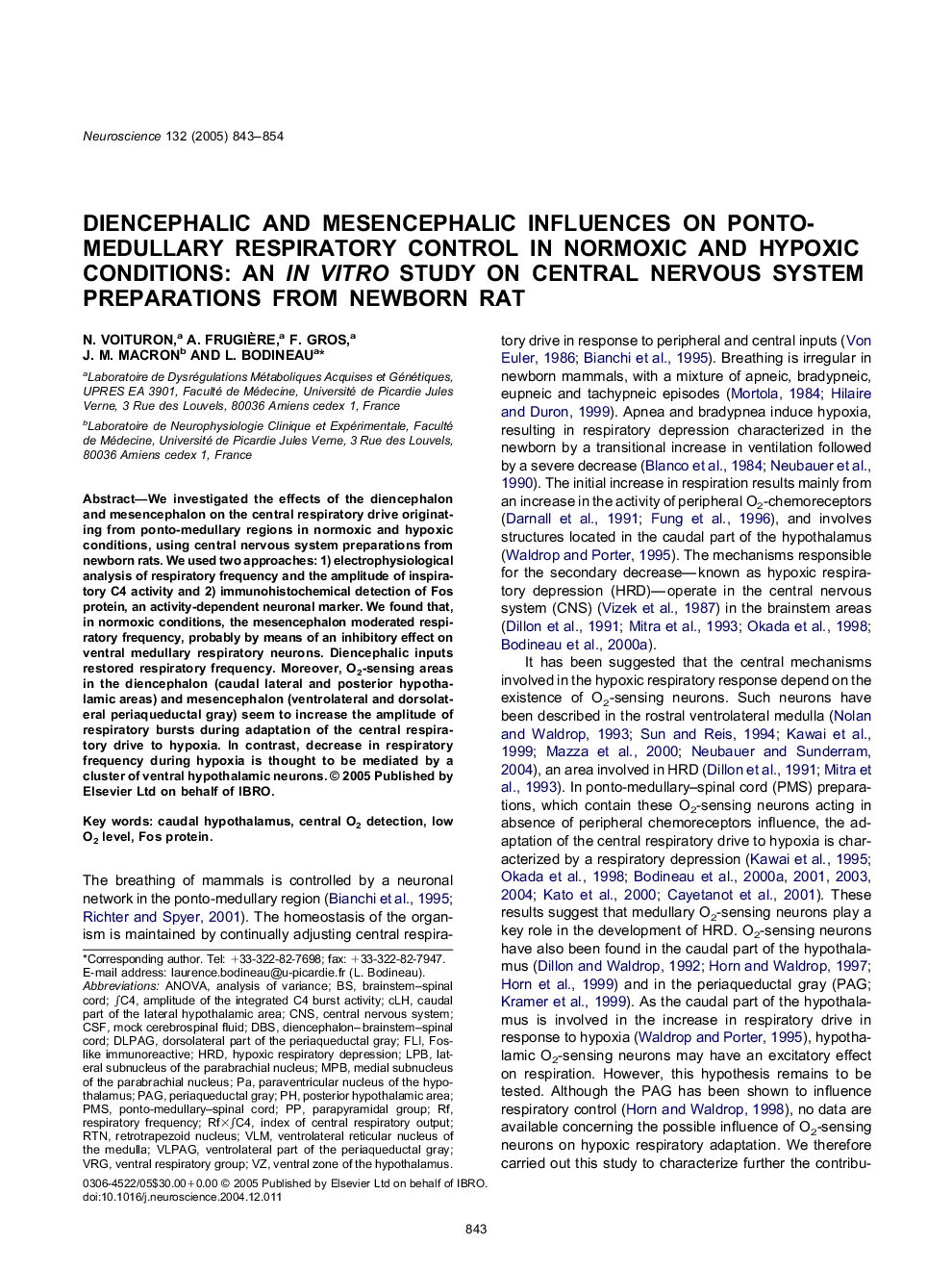| Article ID | Journal | Published Year | Pages | File Type |
|---|---|---|---|---|
| 9426738 | Neuroscience | 2005 | 12 Pages |
Abstract
We investigated the effects of the diencephalon and mesencephalon on the central respiratory drive originating from ponto-medullary regions in normoxic and hypoxic conditions, using central nervous system preparations from newborn rats. We used two approaches: 1) electrophysiological analysis of respiratory frequency and the amplitude of inspiratory C4 activity and 2) immunohistochemical detection of Fos protein, an activity-dependent neuronal marker. We found that, in normoxic conditions, the mesencephalon moderated respiratory frequency, probably by means of an inhibitory effect on ventral medullary respiratory neurons. Diencephalic inputs restored respiratory frequency. Moreover, O2-sensing areas in the diencephalon (caudal lateral and posterior hypothalamic areas) and mesencephalon (ventrolateral and dorsolateral periaqueductal gray) seem to increase the amplitude of respiratory bursts during adaptation of the central respiratory drive to hypoxia. In contrast, decrease in respiratory frequency during hypoxia is thought to be mediated by a cluster of ventral hypothalamic neurons.
Keywords
CLHLPBMPBHRDvlPAGFos-like immunoreactiveRTNdlPAGVLMFLIPAGVRGPMSDBSanalysis of varianceANOVAperiaqueductal grayCNScentral nervous systemrespiratory frequencyCSFPosterior hypothalamic areaparaventricular nucleus of the hypothalamusRetrotrapezoid nucleuscaudal hypothalamusFos proteinVentral respiratory group
Related Topics
Life Sciences
Neuroscience
Neuroscience (General)
Authors
N. Voituron, A. Frugière, F. Gros, J.M. MacRon, L. Bodineau,
